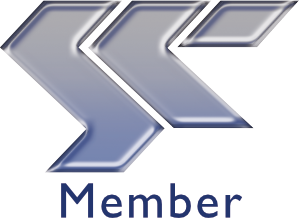Welcome to the first of our 10×10 interview series.
Each month we will be posing ten questions to ten Structural Design and Engineering experts. Our first interview is Scott Crawford, Managing Director at MPN UK.
1. How did you get started as a structural engineer?
I had an interest in building and construction from a young age, which stemmed from my natural interest in the built environment, especially iconic structures such as the Sydney Harbour Bridge and Opera House, and my enjoyment of constructing things like pipe networks from disused plumbing components and structures made from wooden blocks in my earliest years to cubby houses, bridges and dams on our local creek in my teenage years. I also enjoyed and was proficient in my studies in Maths and Science, particularly Physics and Chemistry, at high school and with the guidance of my father, who had worked for the likes of Arup on projects as prestigious as the Sydney Opera House, I embarked down the path of an engineering career, after initially considering Architectural studies, not knowing at that time what Engineers did.
So, I studied a Bachelor of Civil Engineering at University of Sydney and after graduating joined MPN, and then after working for a few years completed a Master of Engineering Science at the Uni of NSW whilst continuing working. My first major project was the design of the early 90’s major extension to Westfield Miranda, in Sydney and I subsequently went on to have a hand on most of the major Westfield centres that were developed/redeveloped in Australia in the 90’s, as well as numerous other projects including the Sydney 2000 Olympic Village and Sydney’s regeneration of East Circular Quay next to the Opera House.
2. How has the industry changed since those early days?
When I started computers were just coming in, there was no such thing as email and most project communications were done on the new-fangled fax machine. At that time MPN only had a few communal use computers for analysis which you had to book time for use, including still one of the 70s era HP punch card machines, and all drawings were still done on the board by hand.
The change in technology from then to now is huge, but the biggest change is the use of 3D drafting technology and BIM systems to document now the most complex projects.
3. What is the latest engineering trend or technological advance that’s made you take notice?
The current trend where we are required to consider more and more the whole of life assessment of CO2 emissions, sustainability and the environmental impact of developments and structures, something which was unheard of when I started my career. This is leading to considering many more diverse types of building systems, including timber and modular (off-site manufacturing) alternatives, in the initial scheme design of projects. We are also asked to consider re-purposing, reuse and retrofit of the existing structure where possible, rather than demolish and rebuild, to maintain as much as possible the embodied carbon in the fabric.
4. Where do you see the industry moving in the next five years?
I think Building Information Modelling (BIM) technology will become even more developed as we move forward, and these will lead to more common use of VR technology to fly clients and other stakeholders through a proposed building long before it starts on site, as well as being used for coordination between disciplines. Though there is additional setup time involved at the start of a project this technology will speed up the design process overall by allowing hopefully quicker decision making by clients and more seamless coordination between disciplines (fewer clashes etc).
5. Not all Structural Design and Engineering practices are the same, so what should a client consider when choosing one?
Some of the questions may be basic but are fundamental. Asking to see case studies of similar projects is a good start. Also asking for references from those projects so you can understand how they performed from the client’s side. Importantly ask questions about team resourcing for the project and individual skillsets. Understanding who will work on your project and for how long will give you an opportunity to assess whether they are the right team for you. It’s important to note that selecting the Structural Engineer purely on price may lead to poor service and won’t necessarily result in the cheapest overall structural solution.
6. How do you add value to a project?
Early involvement with a project is key to delivering maximum value to a project. Drawing on our extensive past experience with a diverse range of projects allows us to advise the client early on what we consider will be the most cost-effective structural solution for the project. Following through by delivering on promises, meeting deadlines and budgets are also essential to deliver an effective outcome for the client.
7. What advice do you have for those starting a career in structural design and engineering?
From an early stage understand the industry you want to get involved in. Research the internet, walk around the city and look at the built environment, try to understand why each structure was designed the way it is. Meet engineers, discuss their careers; you’ll benefit from their wisdom and experience. Where possible undertake site visits either through contacts or through educational institutions. Importantly, throughout your career, continue to be inquisitive and don’t hesitate to ask questions. Also, continue with your professional development to keep you connected and ensure your skills are current and in demand.
8. What are the major challenges affecting the industry at present?
The largest challenge to the industry now is consulting firms being able to maintain sustainable levels of fees in an environment of rising costs. In a competitive market there are many ‘low cost’ engineering firms that use offshore teams, often non-English speaking, ill-qualified, to deliver engineering and drafting services, which can produce a poor outcome (low quality of even unsafe design) for the client but are attractive to the accountants in the initial tender stage due to the price they offer. The other major challenge is the availability of affordable PI insurance for our industry. Increasingly, insurers are pulling out of the PI market, raising premiums, or placing unacceptable exclusions on our work, but without PI insurance in place we are unable to work.
9. What is the most rewarding part of your job?
That’s easy, it’s seeing a project that you have been involved with from the early stages rise from the ground to completion and then to see people using and enjoying the building safely, whether it’s a major shopping centre, commercial offices, residential flats or industrial building. And seeing that the client is very happy with the outcome and the service received as evidenced by requests for repeat business. Like most people, it’s great to get recognition for a job well done.
I look at the achievements of famous Engineers from history such as IK Brunel and JCC Bradfield (designer of the Sydney Harbour Bridge), whom not only derived brilliantly technical solutions to different problems without the aid of computers, but who also were instrumental in driving through the approvals, financing and management of their iconic projects, tirelessly lobbying the government of the day to leave society with valuable pieces of infrastructure which are still essential to modern life today.
Scott Crawford is Practice Director at MPN UK, which has been established for over 20 years providing Civil and Structural Engineering services on a wide range of building structures for a diverse number of clients in the UK and Europe. Get to know Scott by connecting with him by email or via LinkedIn.




